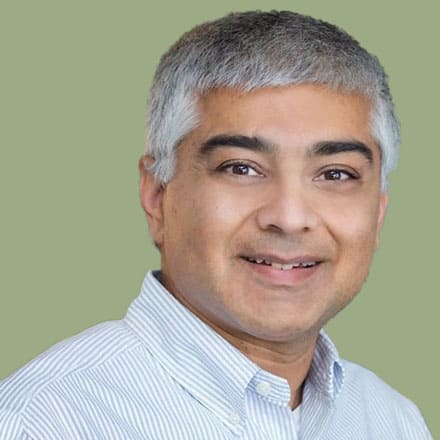Inside Angle
From 3M Health Information Systems
Aligning with industry trends on quality and performance measures
I sat down with Dr. Sandeep Wadhwa, global chief medical officer for Solventum, to discuss opportunities and targeted content available for clinicians and quality professionals who attend the 2024 Solventum Client Experience Summit (CES).
What will clinicians and quality professionals gain by attending Solventum CES?
There’s so much to gain, but several things come quickly to mind:
New patient safety metrics: Quality and safety professionals, as well as clinicians, will come away from Solventum CES with a better understanding of how new patient safety metrics (developed by Solventum) are now being used by U.S. News & World Report. This is particularly important because of the growing volume of elective procedures for our health system customers. In the past, there were fewer measurement tools available to evaluate the quality and safety of ambulatory procedures.
We want to support outstanding peri-operative medicine. There are opportunities to improve results by examining pre-operative, peri-operative and post-operative care. So, we want to help customers better understand how U.S. News & World Report is using Solventum’s tools.
Key industry organizations driving quality measures: Attendees will also learn more about how Solventum works closely with government and third party quality and safety measures. We’re aligned with:
- Agency for Healthcare Research and Quality (AHRQ) measures to make healthcare safer, more accessible, equitable and affordable
- Centers for Medicare & Medicaid Services (CMS) Five-Star Quality Rating System to measure patient experience with Medicare/Medicaid and care at health systems
- Healthcare Effectiveness Data and Information Set (HEDIS) to measure health plan performance for patient populations served
These are measures that the government and managed care plans use to monitor and create incentives with their contracted network providers. We’re excited to be incorporating more quality measures into our solutions. We also continue to incorporate complete and compliant risk capture related to quality measures. This is important to accurately reflect patient complexity when determining expected rates.
How to strengthen connections between teams: Quality and safety professionals attending Solventum CES will discover new ways to connect with other teams — clinicians, clinical documentation integrity (CDI) and coding professionals. Bringing teams together helps build a common language and aligned practices across these professional groups.
We’re enhancing workflows to help teams connect earlier — closer to the point of care delivery and when documentation and coding are being finalized. The ideal for all teams is to identify any documentation gaps as early as possible, in real time, when the insights are most helpful. This approach also supports retrospective analysis to identify patterns for high performers and determine where to focus quality improvement efforts. Solventum continues to provide benchmarks for these quality measures.
Can you talk about Solventum CES from your own personal perspective? What do you hope to learn from customers and other experts at the event?
I’m excited to see so many of our customers in Dallas. There’s a vital sense of community and shared purpose for improving patient safety and doing so efficiently. I’m excited to talk with our customers about patient safety and learn what’s working for them.
I’m also eager to discuss customer insights about throughput and capacity, which is another way of talking about improving patient access. We are very aware of how crowded hospitals are these days: there is now a widespread functional bed shortage. I want to learn more from customers about how we can help them with analytics and benchmarks.
We’re often surprised by what we can learn. Our customers see issues from so many different perspectives. Here’s a simple example: At last year’s event, we discussed patient safety in the context of specialties like orthopedics and urology, but a customer brought up ophthalmology. This was in our system, but the customer had detailed questions about coding complex cataract surgeries and complication rates. They also clarified their specific concerns about getting risk adjustment just right when doing safety benchmarks. That feedback fit exactly with what we were developing in our patient safety tools to evaluate complications in outpatient settings.
I’ll take that kind of spontaneous interaction any day. And I’m looking forward to many more customer insights at Solventum CES this year.
Dr. Sandeep Wadhwa is global chief medical officer for Solventum.
Steve Cantwell is a senior marketing communications specialist at Solventum.




